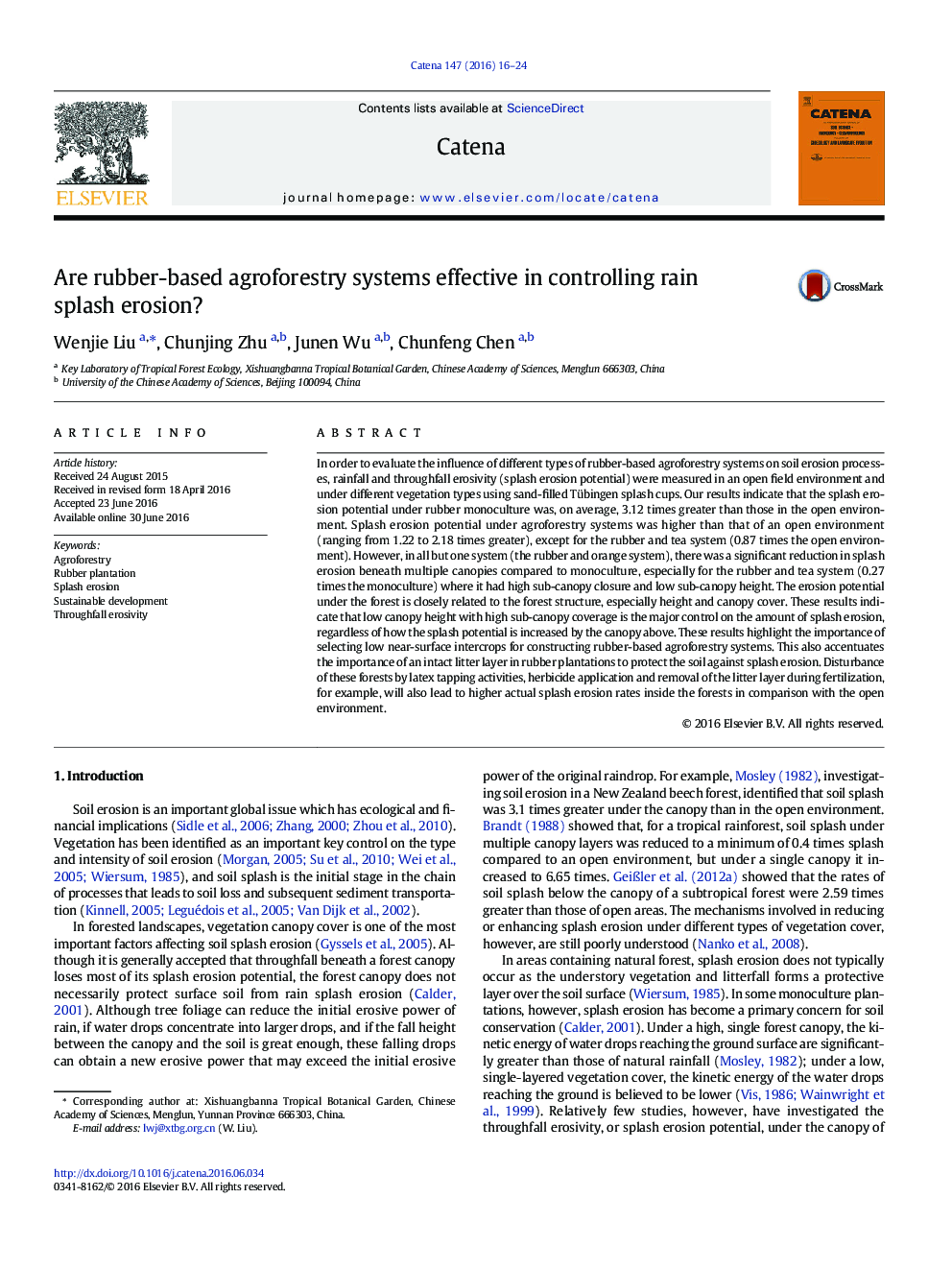| کد مقاله | کد نشریه | سال انتشار | مقاله انگلیسی | نسخه تمام متن |
|---|---|---|---|---|
| 6407683 | 1629205 | 2016 | 9 صفحه PDF | دانلود رایگان |
- Splash erosion was 50.28 t haâ 1 within the rubber monoculture plantation.
- Erosion under agroforestry was greatly reduced compared to rubber monoculture.
- The rubber and tea system was the most effective in controlling potential erosion.
- Low intercrops are recommended for constructing rubber agroforestry systems.
- The results accentuate the importance of an intact litter layer in plantations.
In order to evaluate the influence of different types of rubber-based agroforestry systems on soil erosion processes, rainfall and throughfall erosivity (splash erosion potential) were measured in an open field environment and under different vegetation types using sand-filled Tübingen splash cups. Our results indicate that the splash erosion potential under rubber monoculture was, on average, 3.12 times greater than those in the open environment. Splash erosion potential under agroforestry systems was higher than that of an open environment (ranging from 1.22 to 2.18 times greater), except for the rubber and tea system (0.87 times the open environment). However, in all but one system (the rubber and orange system), there was a significant reduction in splash erosion beneath multiple canopies compared to monoculture, especially for the rubber and tea system (0.27 times the monoculture) where it had high sub-canopy closure and low sub-canopy height. The erosion potential under the forest is closely related to the forest structure, especially height and canopy cover. These results indicate that low canopy height with high sub-canopy coverage is the major control on the amount of splash erosion, regardless of how the splash potential is increased by the canopy above. These results highlight the importance of selecting low near-surface intercrops for constructing rubber-based agroforestry systems. This also accentuates the importance of an intact litter layer in rubber plantations to protect the soil against splash erosion. Disturbance of these forests by latex tapping activities, herbicide application and removal of the litter layer during fertilization, for example, will also lead to higher actual splash erosion rates inside the forests in comparison with the open environment.
Journal: CATENA - Volume 147, December 2016, Pages 16-24
